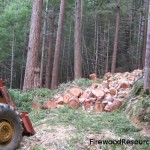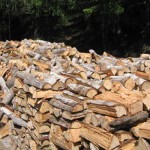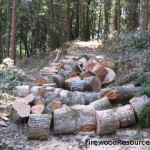HG
We have been providing firewood and other forest products for well over two decades. All our forest products are responsibly harvested from our own privately owned sustainable managed forest land. Learn more about how we manage our forests.
Firewood for Sale in Humboldt California
Firewood for Sale in Southern Oregon
How to Make Sure You Always Get Dry Firewood
Advantages of Heating With Wood
I would guess that the biggest reason people heat with wood today is simply that we love the comfort of wood heat. If you have any experience heating with wood, I am sure you know what I am talking about. Wood heat is probably the earliest form of heating we humans have used, besides the sun. Some would say heating with wood is in our blood.
Whether in the form of firewood or wood pellets, wood is the most available, affordable and practical form of renewable energy for most people in the world. Firewood is one of the few commodities that is usually produced locally, in most cases, your heating dollars are invested in your own community, not a large far away corporation or foreign country. If you can cut your own firewood, wood heat can be by far the most economical way to heat your home. Many people enjoy cutting and processing their winter supply of wood.
Firewood is a renewable biofuel, although it may not burn as efficiently as gas or oil, it more than makes up for it in other ways. Consider that the firewood that you burn did not have to travel half way across the country or from the other side of the world to get to you. It did not have to undergo expensive, energy intensive and environmentally questionable mining, drilling, fracking or refining. It likely came from your own community.
In the parts of the world that are being deforested to make firewood, that is not such a good thing. But here in the US, Canada and other more developed countries, this is usually not the case. Our firewood business produces firewood from thinning and restoring overstocked forests to a more natural condition. Removing excess trees promotes more vigorous growth and health in the remaining forest. In some cases, burning wood can be not only carbon neutral, but carbon positive. Compare this type of heat source that directly funds forest restoration to the environmental impacts of burning oil, natural gas or electricity.
With all the benefits of wood heat, there are some negatives. In some cases there are irresponsible firewood producers who don’t practice good forest management. As a consumer, it is a good idea to question your source about their forest practices, and choose a source that supports your values.
Burning wood can be a big source of pollution. It is also a source of pollution that nature is used to. Lightning sparked wildfires have been pumping massive amounts of wood smoke into the atmosphere long before humans have. But that does not mean it is a good idea to smoke out your neighbors or contribute to unhealthy conditions in areas of air stagnation.
There are EPA certified wood stoves that are designed to burn with no visible smoke, and produce up to 90% less pollutants than the older style stoves. Combine this with burning dry wood, while using good burning practices, and pollution can be kept to a minimum. The added benefit to a cleaner burn is it usually means you are getting more heat out of your wood.
Even with that, burning firewood does cause some pollution. Firewood may be far from being a perfect fuel, it is not for everybody. But when comparing it to other fuels, it does deserve a fair comparison. Natural gas, electricity and oil may pollute less when you burn it at your house. But consider all the pollution and energy that was spent to bring that fuel to you.


